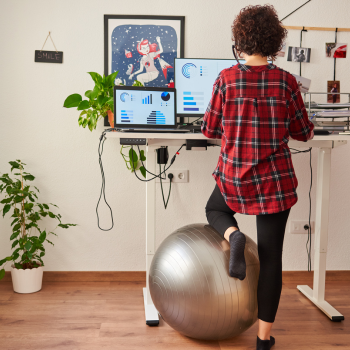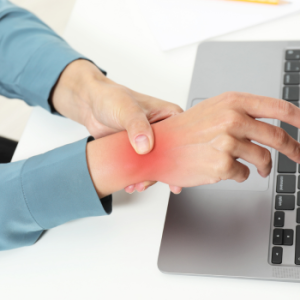With more and more people sitting behind a computer everyday our work station ergonomics are of vital importance for spinal health, function and vitality. This was even more evident throughout the COVID lockdowns where large masses of people were suddenly working from home, often on laptops, leaning over coffee tables and kitchen benches. It wasn’t a coincidence that spinal health issues in existing chiropractic patients rose by 86% and a 78% increase in new patients was observed from spinal pain due to working from home (According to the Australian Chiropractors Association). The following are a few tips to help you improve your work station ergonomics and overall spinal health:
- Consider a Stand Up desk. There are many options out there now which come fully assembled and can be set up on top of your existing work space.
- When Seated at the computer make sure the monitor is at a height with direct eye line to the screen, so you don’t have to look down or rotate the neck.
- Make sure your keyboard and mouse are on a separate level to the monitor
- To ensure correct keyboard height, comfortably relax your arms and shoulders by your side. Now bend your elbow to 90 degrees and set your keyboard/mouse height to that level. This will ensure you are not elevating your shoulders or slumping too far forward
- Have an alarm or reminder set to get up every 20 mins for a quick stretch.
- Look for opportunities for movement throughout the day, such as taking phone calls standing, setting your printer up away from your computer so you have to get up now and then.
- For those that have a standing desk remember to also sit throughout the day. This is because as humans we are hard wired to be inherently lazy. We are always looking for positions of minimal energy expenditure. Its a guarantee that if you stand for too long you will start leaning to one side which results in asymmetrical loading to the body.
- If you continue to experience neck pain, back pain or headaches it’s a good time to have your spine assessed and we would love the opportunity to be of service.
- The Straighten Up App from the Australian Chiropractors Association is an excellent tool and ready for downloading now. This App can set reminders and alerts for taking stretch breaks and includes quick 3-minute exercise flows to help with posture and general movement throughout the working day.





